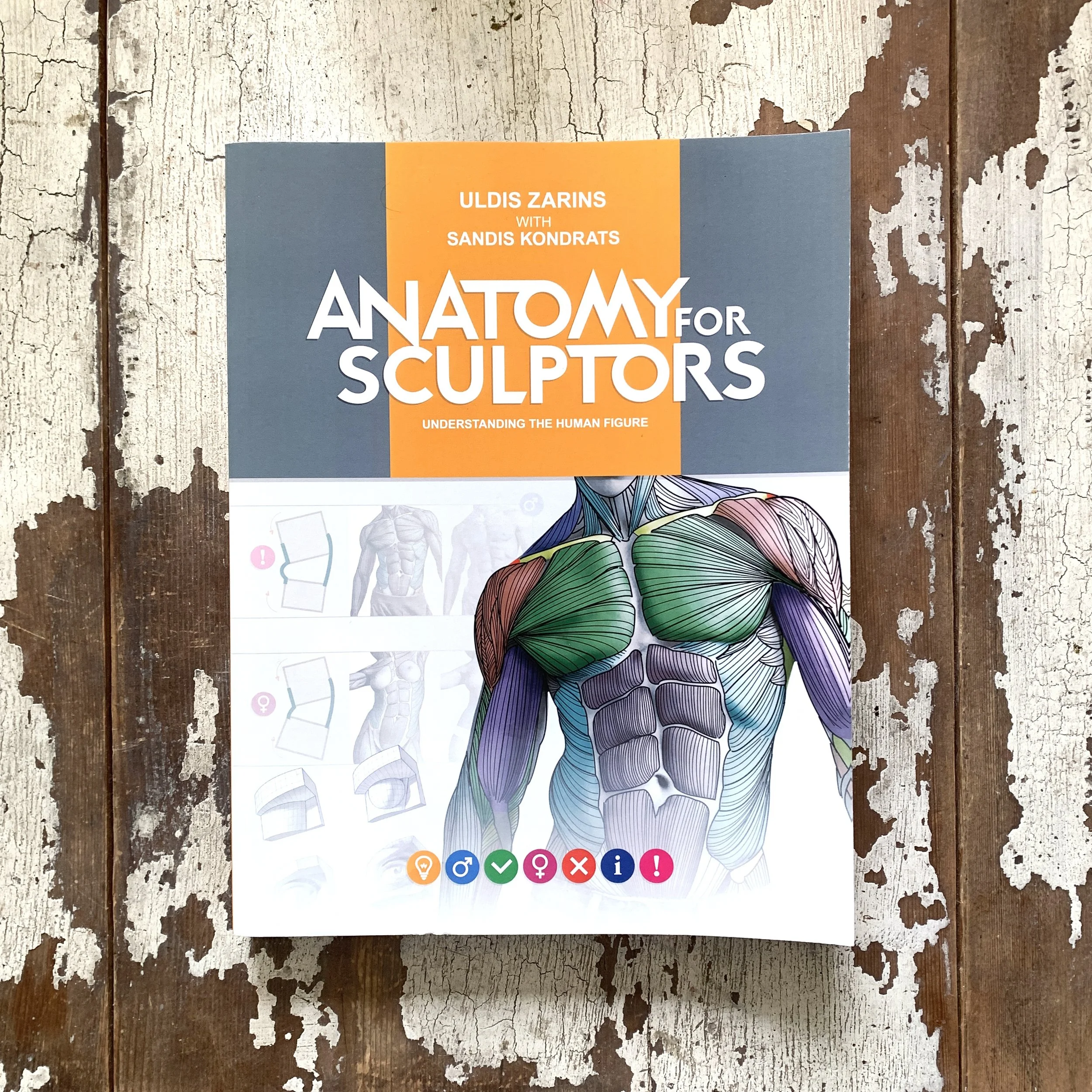I stumbled upon the book "Anatomy for Sculptors" by Uldis Zarins and Sandis Kindrats through a fortuitous web search. As it turns out, it was a highly successful Kickstarter project, and I am so happy to have discovered it shortly after the campaign concluded.
This book encompasses every facet of human anatomy relevant to artists, with a specific focus on sculpture. And that's where the true magic lies.
While studying anatomy is vital for both 2D and 3D artists, "Anatomy for Sculptors" offers something that most generic anatomy books for artists lack: the visualization of body parts through two distinct modes used by the authors: the 'mesh' mode and the 'muscle' mode. The 'mesh' mode employs a grid-like system, enabling readers to understand the precise shapes and volumes of each body part. This feature alone sets the book apart and makes it an invaluable resource—it's like having a topographical map of the human body at your fingertips. Additionally, the 'muscle' mode aids in comprehending the shapes and directions of muscles. But there's more!
In addition to the 'mesh' and 'muscle' modes, the book provides a myriad of visually descriptive elements that prove incredibly useful. For example, there's a selection of images that show facial expressions such as excitement, happiness, anger, and surprise. These images capture the nuances of human emotions and are useful resources for any artist. Moreover, the inclusion of 3D scans of body parts allows readers to develop a deeper understanding of the shapes and relationships between muscles and their surrounding structures.
One noteworthy aspect of "Anatomy for Sculptors" is its highly visual nature. The book contains minimal text, creating an immediate and immersive experience. The emphasis on visual representation ensures that artists can swiftly grasp the concepts and apply them directly to their artistic endeavors.
"Anatomy for Sculptors" is a remarkable book tailor-made for artists seeking to delve into the intricacy of human anatomy for sculpting purposes, but it is also indispensable for 2D artists. Its 'mesh' and 'muscle' modes, combined with the diverse visual descriptions and inclusion of 3D scans, make it a very useful tool for artists aspiring to create accurate and lifelike sculptures as well as drawings and paintings.
Anatomy for Sculptures by Uldis Zarnis with Sandis Kondrats , first published in 2014, 226 pages
https://anatomy4sculptors.com/understanding-the-human-figure/






